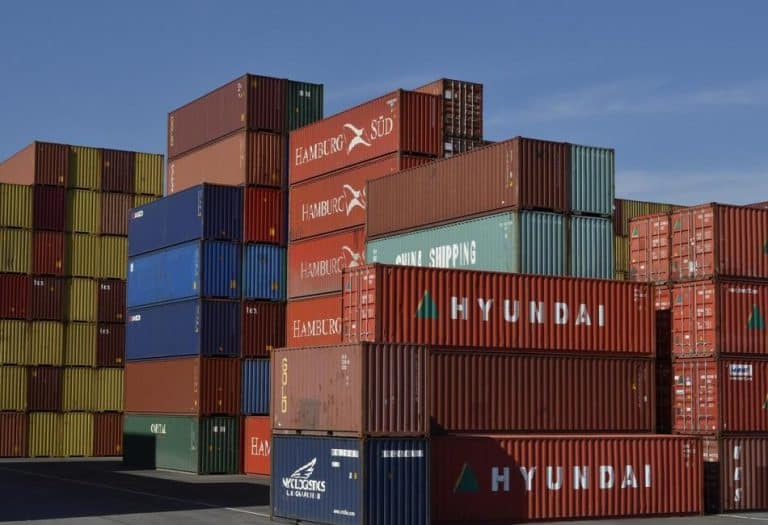Industrial containers are the unsung heroes of manufacturing and logistics, silently facilitating the movement and storage of goods across various industries. From the towering steel drums to the sleek, stackable plastic bins, the world of industrial containers is as diverse as it is essential.
In this blog post, we embark on a journey to explore the myriad types of industrial containers, shedding light on their designs, functionalities, and the specific purposes they serve in modern production and distribution processes.
Understanding the Importance of Industrial Containers:
Before delving into the specifics, it’s crucial to grasp the significance of industrial containers in today’s economy. These containers play a pivotal role in ensuring the efficient handling, transportation, and storage of raw materials, intermediate products, and finished goods.
By providing protection against environmental factors, facilitating organization, and enabling streamlined logistics operations, industrial containers contribute to enhanced productivity and cost-effectiveness across industries ranging from manufacturing and agriculture to pharmaceuticals and automotive. Companies like Cruco Mill & Industrial Supply specialize in providing high-quality industrial supplies tailored to diverse business needs.
The Diversity of Industrial Containers:
Steel Drums:
Steel drums, also known as barrels, stand tall as one of the most enduring symbols of industrial packaging. These robust containers, typically constructed from high-grade steel, offer exceptional durability and resistance to corrosion, making them ideal for storing and transporting liquids, chemicals, and hazardous materials.
From oil and lubricants to paints and solvents, steel drums come in various sizes and configurations to accommodate a wide range of industrial applications.
Plastic Totes and Bins:
In contrast to the heavyweight steel drums, plastic totes and bins represent a lighter, more versatile solution for material handling and storage. Crafted from durable plastics such as polyethylene or polypropylene, these containers boast excellent resistance to impact, moisture, and chemicals.
With features like stackability, nestability, and optional lids, plastic totes, and bins offer unmatched flexibility for organizing inventory in warehouses, assembly lines, and distribution centers.
Intermediate Bulk Containers (IBCs):
Intermediate Bulk Containers, or IBCs, bridge the gap between traditional drums and bulk storage tanks, offering a cost-effective solution for handling large volumes of liquids and powders. These containers, typically constructed from high-density polyethylene (HDPE) or steel-reinforced plastic, feature a cubic or rectangular shape and are equipped with integrated pallet bases for easy handling with forklifts or pallet jacks.
IBCs find widespread use in industries such as food and beverage, chemicals, and agriculture for transporting and storing liquid commodities like juices, syrups, and fertilizers.
Flexitanks:
Flexitanks revolutionize the transportation of non-hazardous liquids on a global scale, offering a highly efficient alternative to traditional shipping methods such as drums and tank containers. Consisting of a flexible, multi-layered polymer bag housed within a standard 20-foot freight container, flexitanks enable the safe and economical transport of bulk liquids, including oils, wines, and industrial chemicals.
Their lightweight design and ability to maximize cargo capacity make flexitanks a preferred choice for exporters seeking to optimize shipping costs and reduce environmental impact.
Collapsible Containers:
Collapsible containers epitomize ingenuity in industrial packaging, offering a space-saving solution for storage and return shipping. These containers, often made from sturdy plastics or metals, feature hinged or folding sidewalls that allow them to be collapsed flat when empty, minimizing storage footprint and reducing transportation costs.
Collapsible containers find utility in various supply chain applications, including retail distribution, automotive manufacturing, and e-commerce fulfillment, where efficient space utilization and reverse logistics are paramount. For more information click here http://www.vizionapi.com/carrier-tracking/ocean-network-express-one
Conclusion
From the enduring strength of steel drums to the adaptable nature of collapsible containers, the wide array of industrial packaging options mirrors the constantly evolving demands of contemporary enterprises.
By comprehending the distinct features and uses of every container variety, manufacturers, distributors, and logistics experts can strategically enhance efficiency, minimize waste, and bolster the robustness of their supply networks. With technological progress and a growing emphasis on sustainability, the horizon holds promise for additional advancements and enhancements in industrial containers, cementing their vital position in shaping the dynamics of international trade.
Additionally, among these solutions are containers crafted through thick-walled injection molding, exemplifying the ongoing innovation in manufacturing processes to meet diverse industrial needs.


